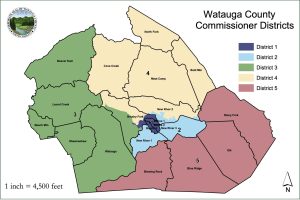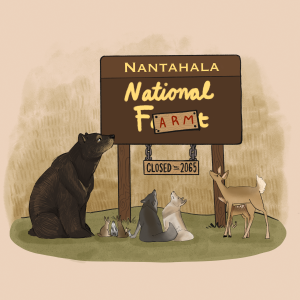App State professor returns from research in Antarctica
April 25, 2019
Ellen Cowan, professor in the Department of Geological and Environmental Sciences, boarded a scientific drill ship called the JOIDES Resolution to research the loss of ice sheets in Antarctica.
Cowan applied for the International Ocean Discovery Program Expedition a year ahead of the trip to Antarctica and was accepted along with 27 scientists.
“There were six or eight scientists from the U.S., some from Germany, Japan and China, but the working language was English,” Cowan said.
All the scientists worked a 12-hour shift each day. Cowan woke up at 8:30 a.m., went to the gym, connected with her family via internet if available, ate, met with the scientists and started her work. Scientists were allowed free time, but they were always flexible because there was always something happening on the ship, Cowan said. Scientists on the ship needed to be flexible because new data on new findings were always changing, so scientists had to have time to collect this information, even in the down time they were given.
Cowan and others sailed from Chile to Antarctica and returned on March 15, making this trip a total of 68 days.
Cowan said all of the food was made on the ship, and once she left Boone, the ship had everything she needed. Scientists on the ship were asking questions about what the sediment record reveal about past climates in Antarctica. The drilling expedition will allow researchers to find out how changes in the climate affect the West Antarctic ice sheet. Studying sediment supplied from the West Antarctic Ice Sheet will allow scientists to determine its size in the past and how the constant warming of the planet might affect the sea level in the future, Cowan said.
“Ice sheets that reach sea level are very vulnerable to climate change and as the oceans warm up, extreme ice sheet loss and rising sea level is a possibility for the future,” Cowan said.
Cowan will be working with sediments deposited by the ice sheet over 5 million years ago. This research will tell her when the ice sheet was present at sea level and when it was not.
Cowan’s research consists of looking at the sediment called ice rafted debris, ice rafted debris is sediment that comes from the icebergs. When icebergs melt, the debris is released and falls to the sea floor. Cowan and her students will look at large sand grains deposited on the ocean floor that only could have come from icebergs to find out information on the change of temperatures. Cowan can tell where the sediment came from and what it means about the extent of the ice sheet in the past. The cores contain sediment representing the cycles of cold and warm periods where the ice sheet got smaller and bigger over the past million years. This tells scientists how the climate is changing overtime.
Due to the isolation of the Amundsen Sea in Antarctica, where the ship was located, the drillings on this trip are the first cores ever to be drilled in this region. The Amundsen Sea is experiencing the largest ice loss in Antarctica, and scientists want to know why.
“Not a lot is known about Antarctica, so anything we found was brand new, since this area had never been drilled before, and it was an amazing experience to see these huge icebergs,” Cowan said.
Cowan said the ship was an example of “science as a community,” because everyone on the ship shared a sense of discovery.
All scientists on the ship share samples of their findings and will meet again to research the sediment found. The cores that were drilled will be stored at Texas A&M University.
In August, Cowan will pick up her samples, bring them back to App State and continue her research.
For now, she said she knows the record is good, and scientists can tentatively see climate cycles, which is when the climate was changing or not. After picking up the samples, she will work on the data to find climate cycles with her students at App State and will have two years to publish her findings.











